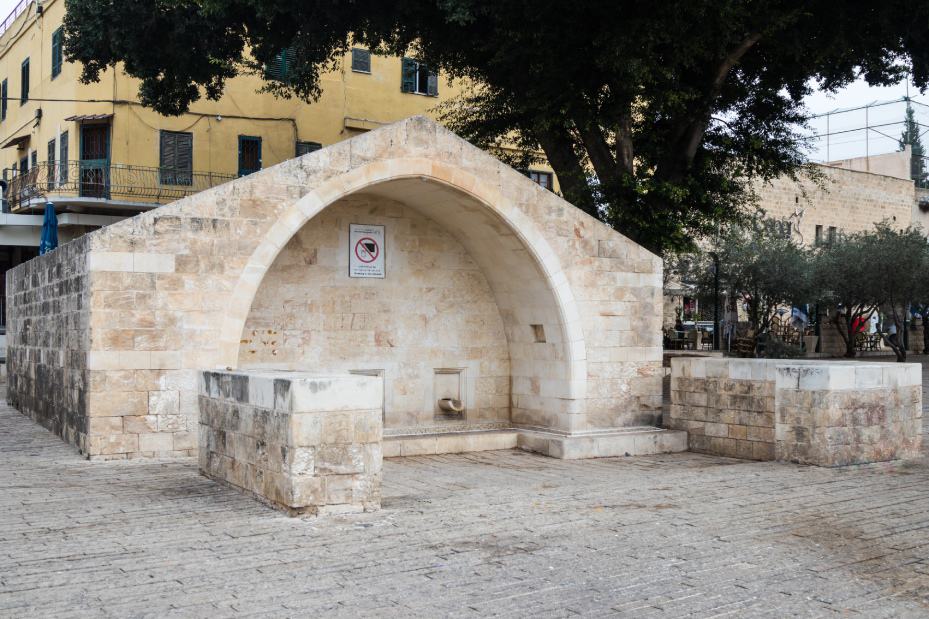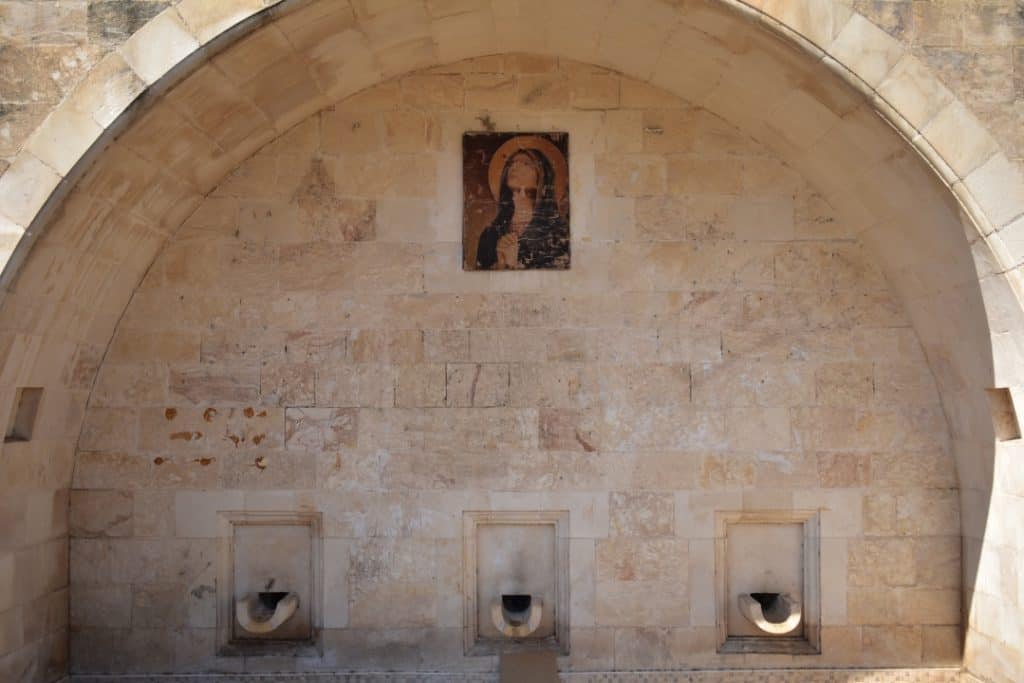Mary’s Well or The Spring of the Virgin Mary is reputed to be located at the site where according to mostly Christian Orthodox the Angel Gabriel appeared to Mary, mother of Jesus; and announced that she would bear the Son of God – an event known as the Annunciation.

Mary´s Well for Cathloics
So the Catholic Church believes the Annunciation to have taken place less than 0.5 km away at the Basilica of the Annunciation; a new modern structure that houses an older church inside of it that dates from the 4th century.
This basilica was erected after the first small church was built there at the request of St.Helena, mother of Emperor Constantine; in the 4th century on the site where she found the source of Mary’s Well. This place is also named Mary’s Well. Today this source is located in the basement of the Annunciation basilica. Excavations have shown that it is fed by the same source as the well close to the orthodox church; and probably existed at least since the 2nd century.

In fact, the earliest written account that lends credence to a well or spring being the site of the Annunciation comes from the Protoevangelium of James a non-canonical gospel dating to the 2nd century. The author writes: “And she took the pitcher and went forth to draw water, and behold, a voice said: ‘Hail Mary, full of grace, you are blessed among women.”
Mary´s Well is also considered sacred to Muslims and its waters have been attributed healing properties. They used to pack the spring water in bottles for generations and send them to Europe. In fact, the Catholic Church even gave its visitors indulgence of sins. The pass and the tree next to it appear in the emblem of the city of Nazareth.
Sadly the Original Mary’s Well Didn’t Survive
While the current structure referred to as Mary’s Well is a non-functional reconstruction inaugurated as part of the Nazareth 2000 celebrations; the traditional Mary’s Well was a local watering hole; with an overground stone structure. Through the centuries; villagers would gather here to fill water pitchers (up until 1966) or otherwise congregate to relax and exchange news. At another area not too far off; which tapped into the same water source; shepherds and others with domesticated animals would bring their herds to drink.
Also, the Greek Orthodox Church of the Annunciation located a little further up the hill from the current site of Mary’s Well; is a Byzantine-era church built over the spring in the 3rd century; based on the belief that the Annunciation took place at the site.
How to Get to Mary’s Well in Nazareth?
Getting to Mary’s Well in Nazareth from Tel Aviv is super easy! You’ll need to connect to HWY 20. Then Head East to HWY 5. After a 20 min drive, you’ll need to connect to HWY 6 North which after about an hour plus get off and connect to HWY 65. This would lead via the Jezreel Valley and eventually connect you to road 60 all the way to Nazareth! While touring the city just stay on the main road till you reach a traffic circle. There you should turn to Paulus the Sixth Street which will take to Mary’s Well.

